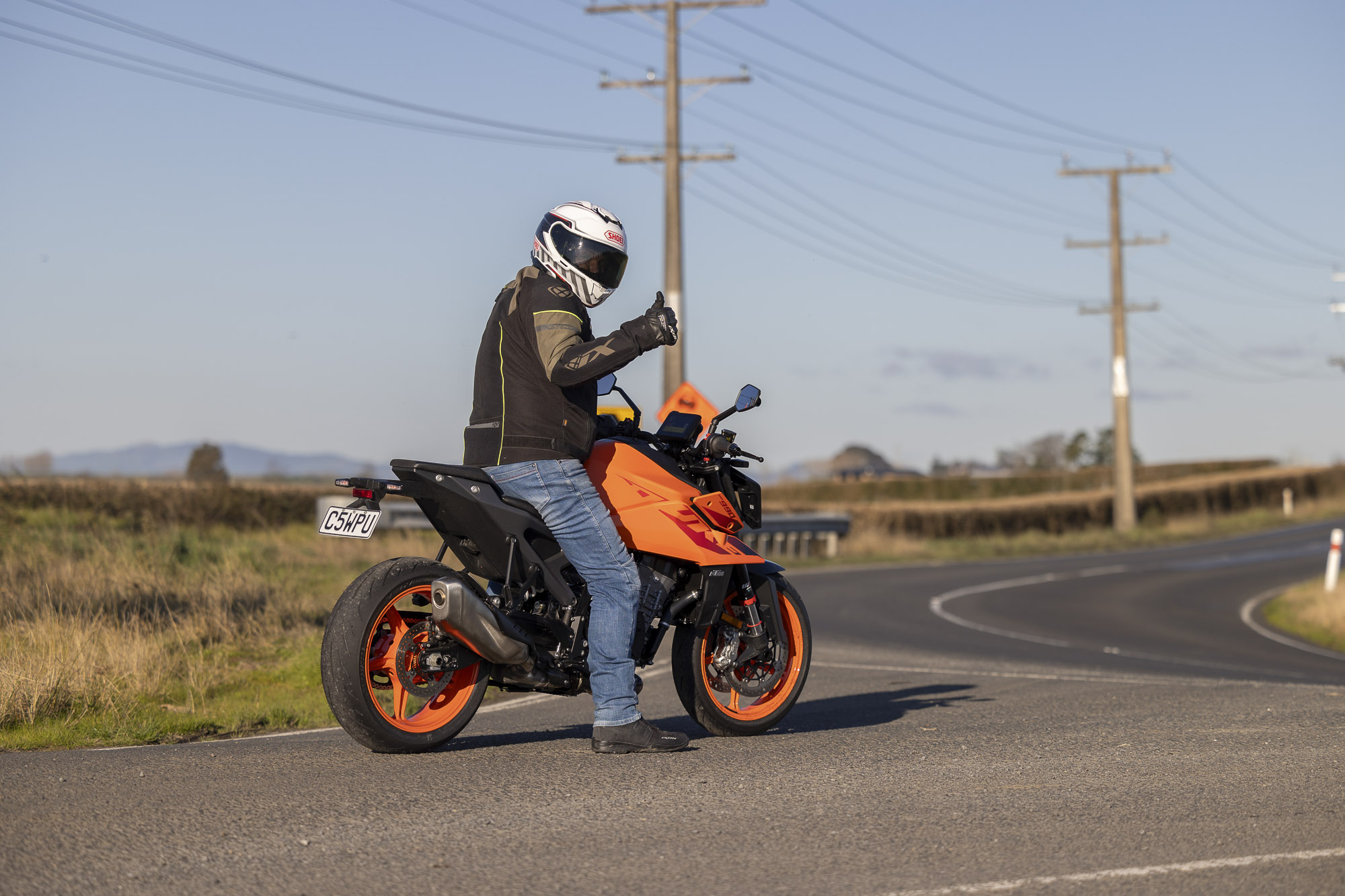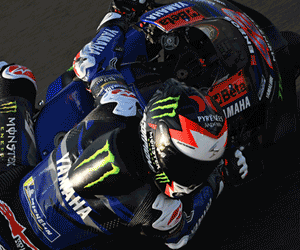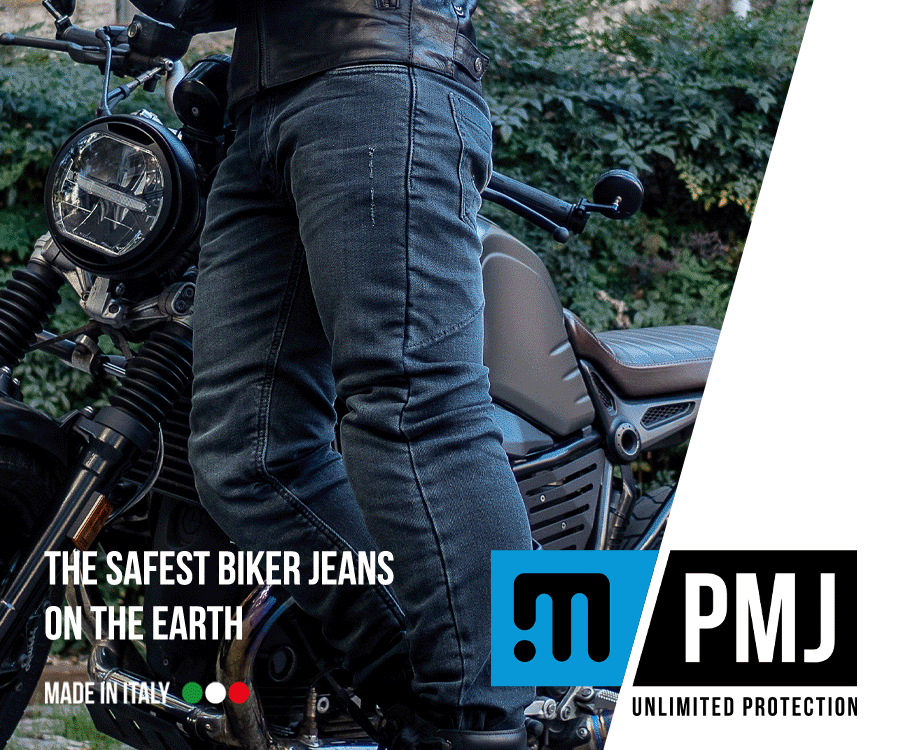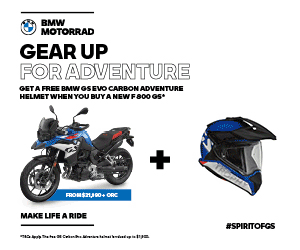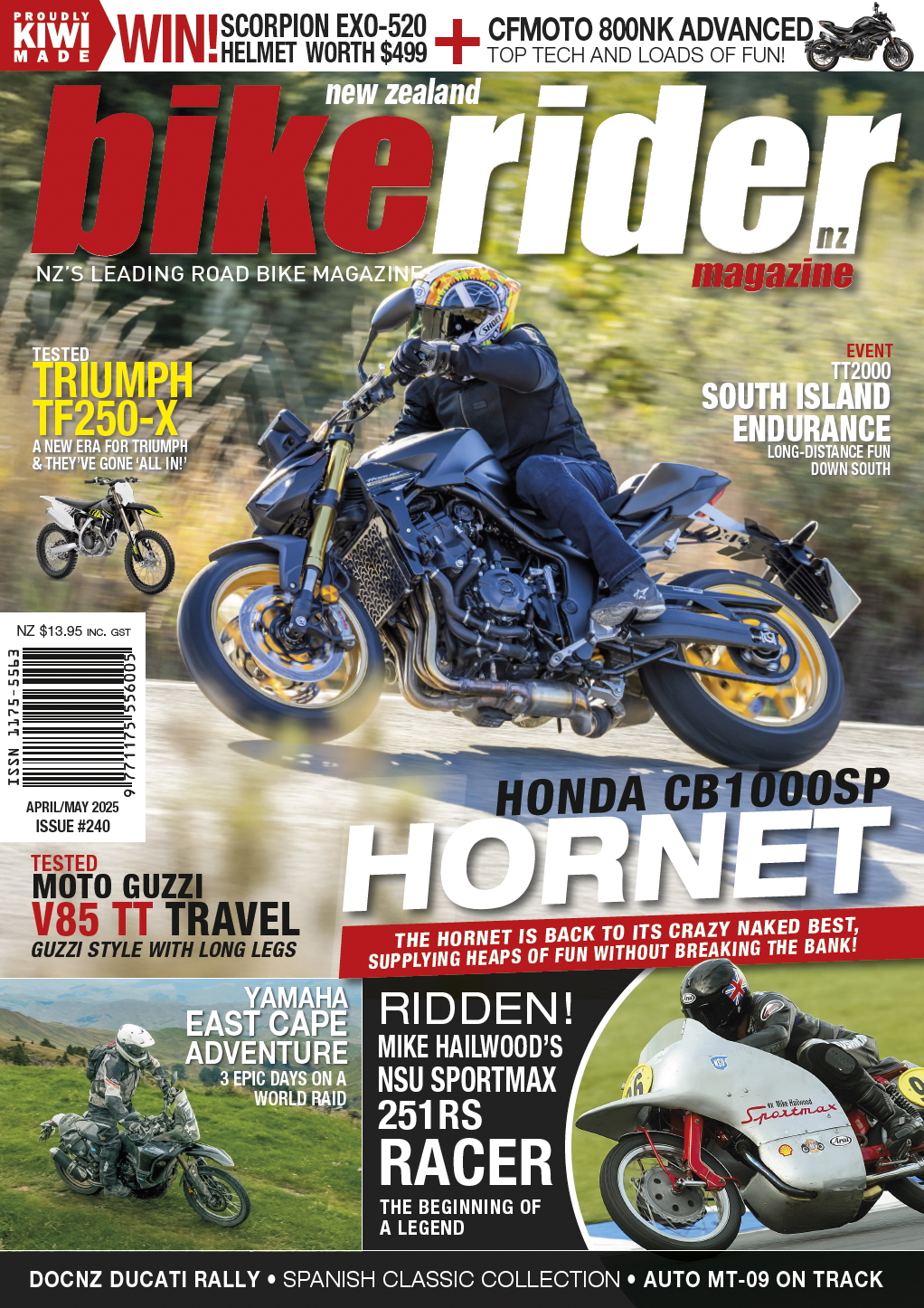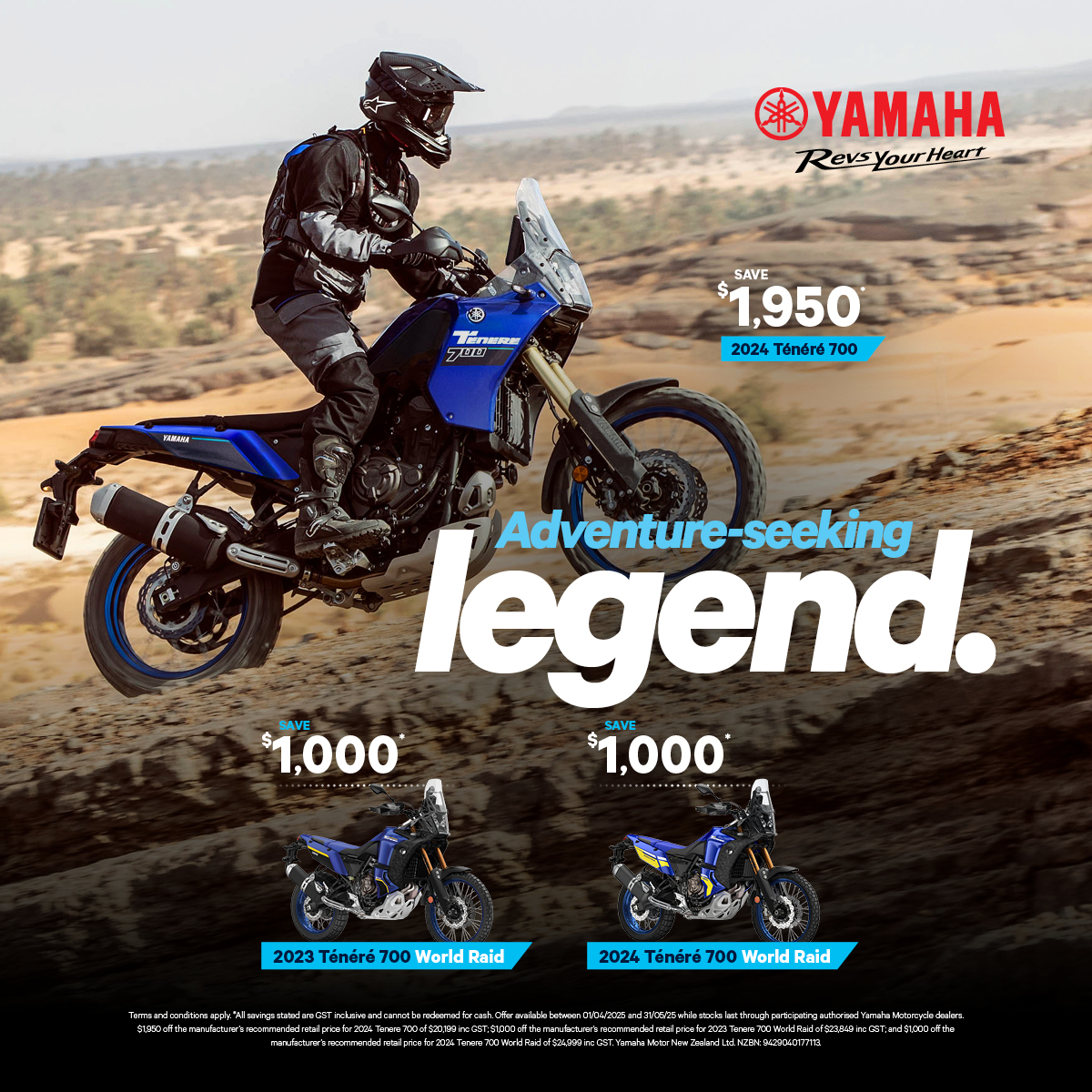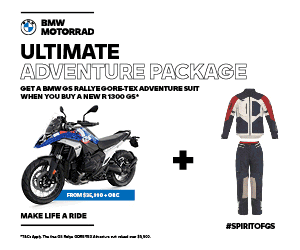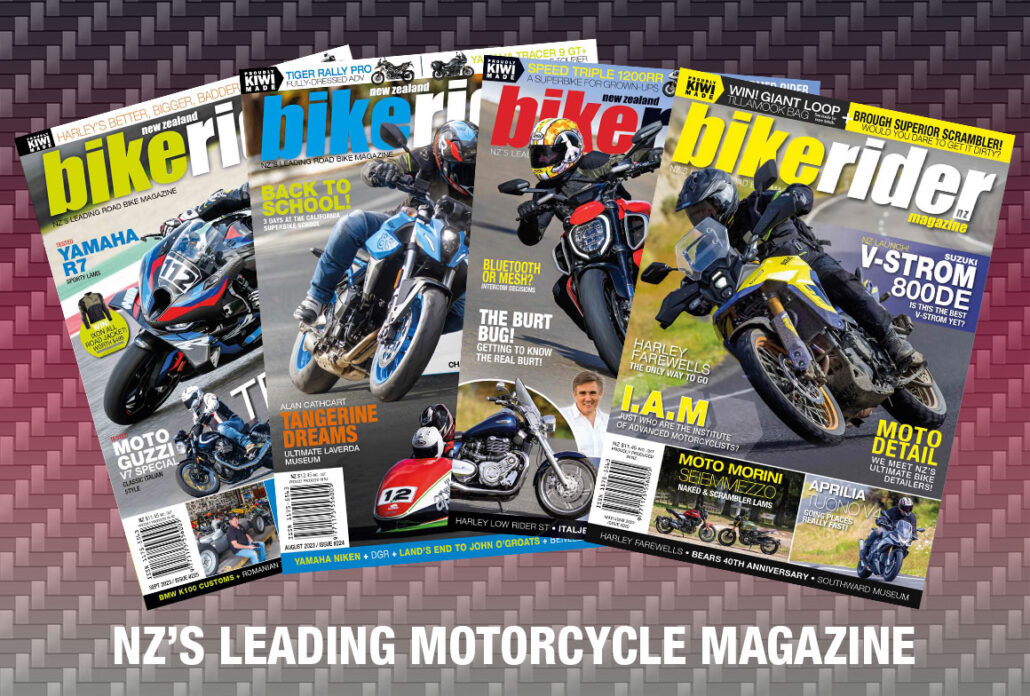- Capacity increased to 947cc from 2024.
- Output increased from 115hp to 123hp.
- Full suite of electronic goodies, if you option them.
KTM’s naked wild child now shares the same capacity as the original Duke released in 2005, although an almost 1-litre capacity has somehow morphed into being classed as ‘mid-class’ in 2014. Paul checks out the latest version to see if it’s just as crazy as the original.
The original 990 Duke was a crazy machine that simply egged you on to ride like an idiot as soon as you’d turned the key and hit the starter. 120hp combined with a short wheelbase, low 179kg weight and supermoto ergos made it the hooligan’s bike of choice, although a sky-high saddle and small fuel range really meant you wanted to ride like a hoon to buy one.
Forward on to today, and the 2024 KTM 990 Duke has once again been released as a 990, although this time, the configuration is a parallel twin rather than the punchy Vee that powered the original model. And while they call it a 990, the actual capacity is 947cc, up from the 899cc of the previous version via a slight increase in bore and stroke, although the jump in output is significant, going from 115hp to 123 @ 9,500rpm on the new model while torque has gone from 92Nm to 103Nm. That’s a pretty healthy increase from only a small jump in capacity, although it’s still similar to the model which began it all back in 2005.
Yet the two machines can’t really be compared, with the sophistication, comfort and versatility of the latest version trumping the old model. While there’s not that much difference from the previous 890 version, one thing that has changed is the styling at the front of the bike, which I was in two minds about when I collected it from KTM in Auckland. I couldn’t help thinking it reminded me of an alien’s mouth in some CGI American action hero movie, with the LEDs down each side of the front accentuating the ‘mouth’. But that perception changed as I got the KTM home, and the LEDs stayed on to guide me to the garage door when it was dark, while the stacked LED headlights did a great job of lighting the road ahead.

Civilised Hoon
In fact, the overall styling of the new Duke almost feels a little more ‘grown-up’ than the previous version, with the lower-slung exhaust not only looking more traditional than the high-level version on the previous model but also likely to keep the C of G lower in the chassis. The shrouds look more substantial, and it’s almost like the Duke has finally grown up with the latest itineration, which is likely to make it appeal to a broader cross-section of riders. Don’t get me wrong; it’s still razor-sharp. You’ll just be able to do more than one tank of gas on the new model without needing a rest.
The Duke has always been a bike for taller riders, although a drop in the height to 825mm makes it much more accessible to those who aren’t too long in the leg department. If you’ve tried one before and felt it was too tiptoe for you, then give the new model a try.

From the saddle, the 2024 model gets an all-new 5-inch bonded glass TFT dashboard that features KTM’s latest layout and software to try and make it faster and easier to navigate. I’ve never found KTM dashes particularly easy to navigate (more PC than Mac – if you know, you know…), so the update will certainly be welcome to those who feel the same. To be fair, if you own a KTM, then you’ll quickly learn what menu to go into and where to find things, but for the uninitiated, it can get a bit frustrating. As is par for the course nowadays, you can connect your smartphone if you’ve got the KTMConnect app and access navigation while also managing audio and calls.
The chassis has also been tweaked with the new model, adding a bit of lateral stiffness through the frame, while a new swingarm has been designed to give a bit more flex and, therefore, feel. WP supply the suspension with QP APEX 43mm separate function forks offering full adjustment, while the rear shock has spring preload and rebound. The brakes are strong enough to stick the Duke on its nose, with the four-piston radially-mounted calipers gripping 300mm discs at the front which are also claimed to be lighter. And while KTM claims the 947cc LC8c parallel-twin engine is the most compact twin in its class, they also reckon a more aggressive camshaft profiles and longer valve openings are designed to offer improved rideability. Well, there was only one was to find out…
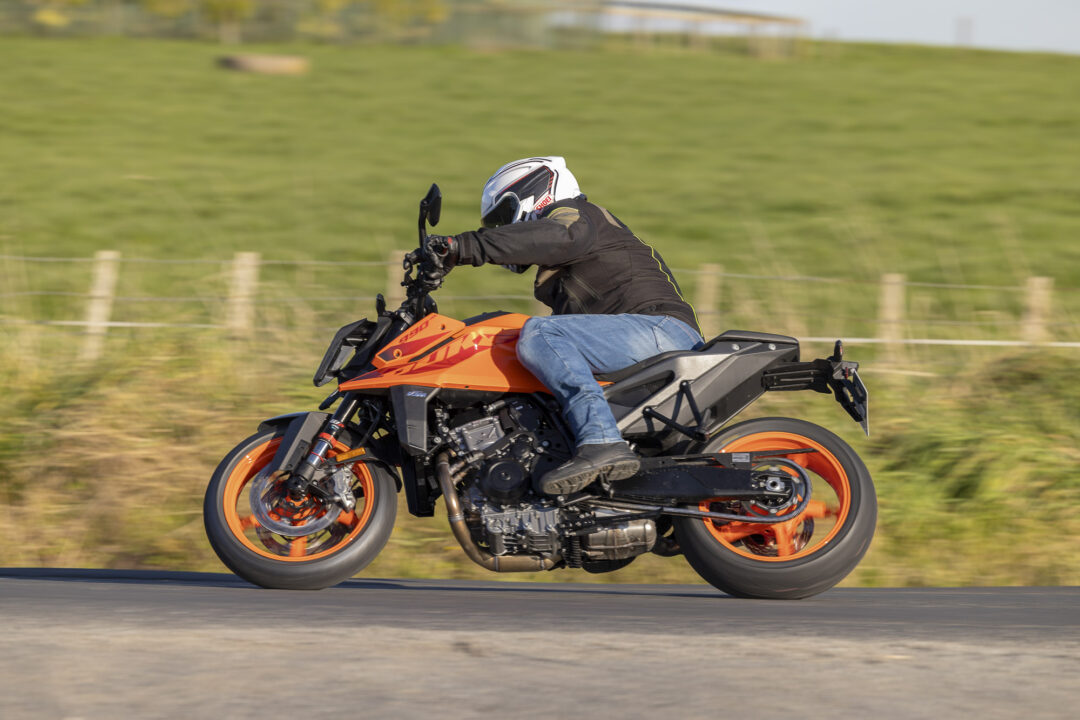
Still A Duke
Swinging a leg over the saddle of the new Duke and it’s instantly obvious that this bike has been designed to appeal to more riders. The 825mm saddle adds confidence as I can get both feet firmly on the floor, while the sit-in riding position with the orange tank raised up in front of me further increases the feel that the Duke doesn’t want to rip your arms off. Okay, the reach to the wide handlebars is still on the sporty side, but it’s not a patch on the original version from all those years back. The Duke feels like it has grown old and, well, more stately. Yet I was fully aware that despite all the cosiness, there was still plenty of Duke mongrel ready to be unleashed.
The KTM is dripping in tech, although some of it needs an added bit of cash from your wallet to unlock it after you’ve been through the first 1500km of Demo Mode, after which the good bits are automatically turned off if you didn’t option them. Yes, you can go to your dealer, pay a bit more during the service and get them switched back on for good, but you’re likely to want them so pay for them at the beginning and just take it. You won’t be disappointed.

The Duke comes with three riding modes as standard – Rain, Street & Sport – while you can option the pack to unlock Performance and Track Modes. In Rain the output of the LC8 is dropped to 105hp with the rider aids switched to max and the throttle map softened, while Street gives full power, medium intervention and a middle throttle map. Sport features a sharper throttle – although it’s not too sharp for road work – while intervention is dialled right down, with the front wheel allowed to leave the road slightly in Street and Sport before the electronic police get involved. Performance mode allows customisation of the traction control and throttle response and lets you choose to switch off the anti-wheelie while adding launch control and cruise control. Then there’s Track mode which adds the final piece of the puzzle, with more information on the dash, including a bold rev counter, live lean angle and 10 levels of rear slip control for when you really want to let it all hang out.
The switchgear on the KTM all feels quality, with the large + and – toggles underneath the left switchblock allowing you to dial up and down various features like the traction or wheelie control. But it also doubles quite nicely as the up and down for the cruise control that was fitted to our test bike, making it really easy to adjust the speed to match any traffic that I approached when cruising on the motorway. It was very civilised and very not hooligan in the slightest, especially with a riding position that doesn’t feel like it’s got you locked into attack mode as soon as you slide onto the saddle. Instead, the Duke is a comfortable place to be, with the pegs low enough to not cause cramped legs, while a small rise at the front of the saddle is there to stop you sliding into the tank. The only drawback is the total lack of wind protection, although that does have the benefit of keeping the speed down slightly.
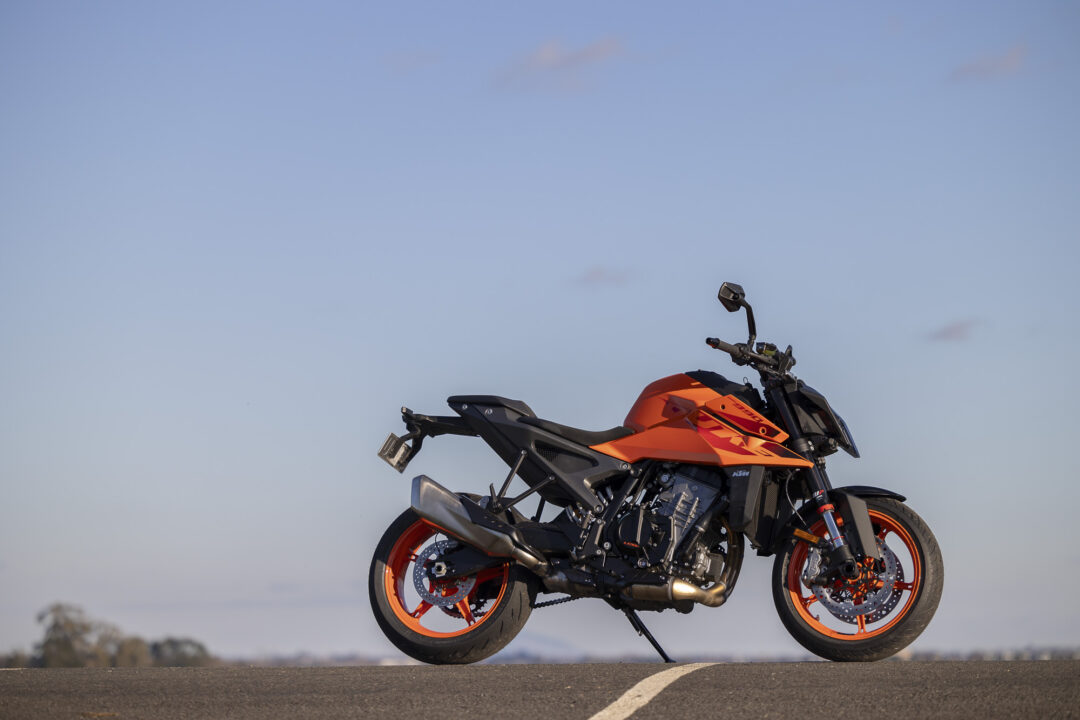
Heading out to play and I left the KTM in Street mode as I was, well, on the street and it seemed best to keep the nuttiness dialled down slightly until I’d got some warmth into the Bridgestone S22s that the orange wheels come equipped with. Plus, with only 44km on the clock when I picked the KTM up, I felt a certain amount of restraint was needed at least until the trip got into triple figures. Flicking from side to side in an attempt to roughen up the edges of the Bridgestones revealed that the Duke had lost none of its lightning-fast speed when it comes to direction changes, and this is the epitome of thinking about turning, and it’s done. And while I’d never be able to detect an added 5% of stiffness here or there while riding on the road, what I soon learnt was that the Duke simply encourages you to push harder and faster in corners by supplying loads of feedback and confidence.
Thankfully, I could see a steering damper poking out underneath the headstock, especially as winding with the throttle on and giving a whiff of clutch soon saw the front wheel of the KTM leaving the ground – this really is a machine that any wheelie fan would love to own. The power delivery from the motor is predictable, although in top gear below 5000rpm it does struggle a bit when you pull out to overtake, so it certainly does like a cog to be dropped and getting the revs over that 5k mark before things really start to happen. Thankfully the up-and-down shifter is absolutely sublime, and it’s beautiful short shifting up through the box when you get a little pop from the exhaust, and there’s also a nice burble on the overrun when you close the throttle. One slight issue is the gear lever itself is actually really short, and I had to turn my toes in from the footpeg to find the gear lever to change gears. So if you’ve got big feet, be warned.

Performance from the 990 is fast, but it still doesn’t feel like you almost got an almost 1-litre twin sitting beneath you, and it is certainly more about the mid-range than it is a screaming top end. By the time the rev counter gets above 8,500 – 9,000rpm, the LC8 really is looking for another ratio in the gearbox. And when you slot it in, you’re rewarded by the revs diving back into the meat of the power from 5 – 8000rpm. That’s where things really start to happen and the Duke is at its most devastating.
With a sit-up riding position, wide bars and a stonking mid-range, it’s no wonder that any crests in the road sees the front wheel lofting, and it was great to see the Duke hasn’t lost any of his spirit if you love hooning down back roads and making the most of the lightning fast handling and that torquey parallel twin motor. Thankfully, the WP Apex suspension at the front, which is fully adjustable, has been set up more for the road than the racetrack and is supple enough to handle all the lumps and bumps we’re faced with on any backroad. And while the KTM-branded monobloc four-piston calipers supply heaps of stopping power, there’s also plenty of feel for carrying brakes into turns. If you want to fiddle with the clickers, it’s nice to see they can be firmed up without tools, making it easy to ride to a track, firm the forks and then go for a blast. And the brakes are more than up to the job of scrubbing serious speed both on the road and the track.
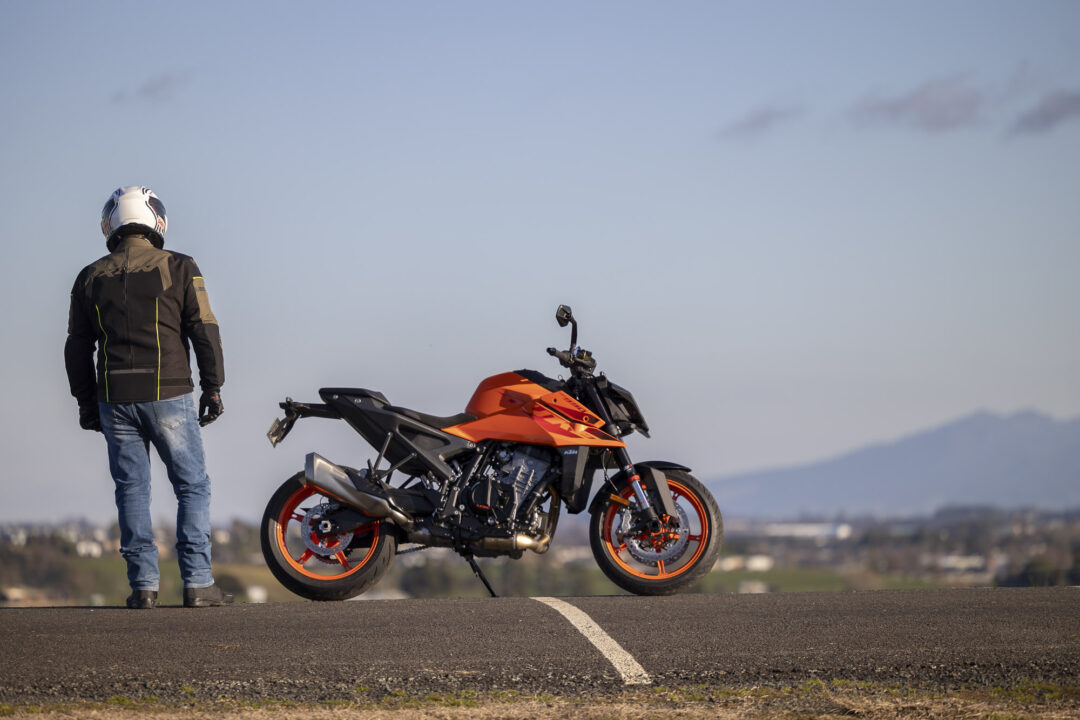
Verdict
Overall, the KTM is a really fun machine on the road that will easily turn its hand to do a bit of track riding if that’s your thing. It’s comfortable and there’s plenty enough tech to keep the biggest geek happy. The parallel-twin motor provides heaps of power for road use, and it’s power where you can use it, with a super strong mid-range that makes an absolute blast for twisty back roads.
I wasn’t so sure of the looks when I first saw it, but they soon grew on me, and it was also great to spend a day in the saddle without feeling like you were being cut in half, as was often the case with the original model. In 12 years, KTM has come a long way with the Duke. Yep, if you want it to be a razor-sharp, wheel-standing, hoon-machine, it can easily turn its hand to that and won’t disappoint. And with the wheelie and slide control aids if you option them, it will be safer than ever doing it, to a point… But the beauty of the new Duke is that, if you aren’t feeling like being a road warrior when you wheel it out of the shed and jump on, it will happily turn its hand to cruising on the motorway aor flowing through your favourite twists and turns. You don’t need to ride it at 10/10ths to make everything work.
Yeah, I still struggle a little with the KTM dash, but it’s something that you get your head around after a day using it. And the pops and bangs from the motor as you flick up and down the box using the seriously good quickshifter (if you’ve optioned it) more than makes up for any techno grumbles. While the new KTM 990 Duke isn’t a ground-up remake of the outgoing 890 version, it’s certainly enough to make you pleased you’d got the new model. And if you always fancied a bit of mongrel but weren’t prepared to live with it 24/7, you don’t need to with the new Duke. Push a few buttons, and it’ll happily be a pussycat until you get the urge to unleash it.
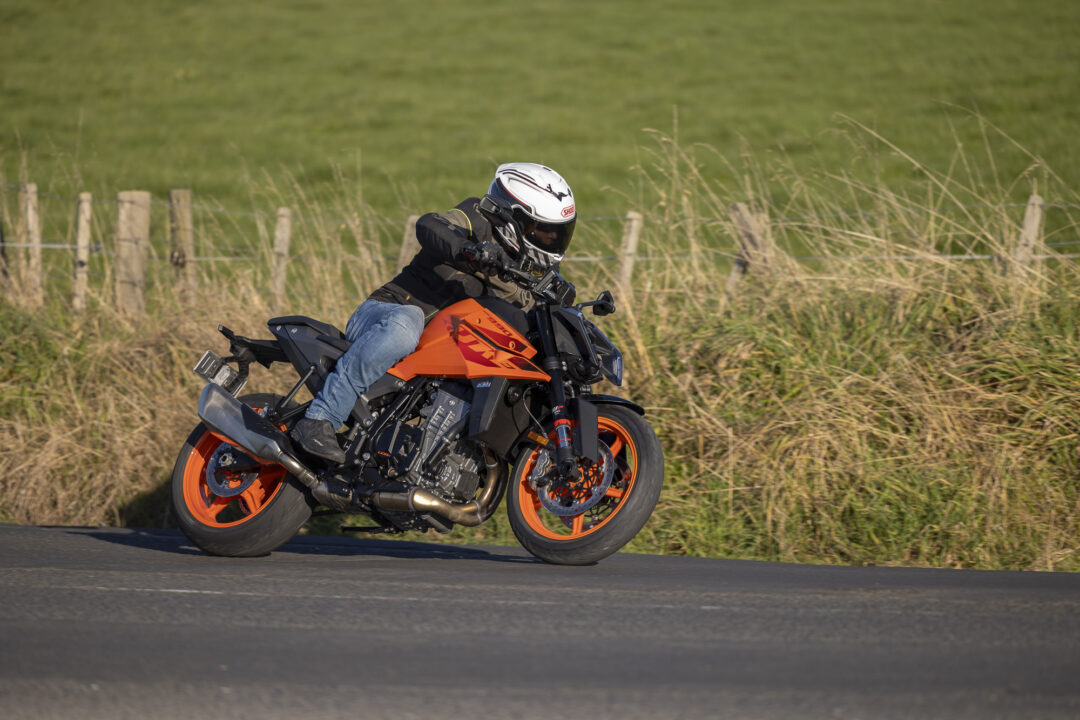
Specifications
2024 KTM 990 Duke
Price
$21,499 + ORC
Capacity
947cc
Bore x Stroke
92.5mm x 68.8mm
Engine layout
Parallel twin
Engine details
8-valve, DOHC, liquid-cooled
Power
123bhp (90.5kW) @ 9,500rpm
Torque
76lb-ft (103Nm) @ 6,750rpm
Transmission
6-speed, assist/slipper clutch
Average fuel consumption
4.7l/100km (claimed)
Tank size
14.8 litres
Rider aids
Cornering traction control, cornering ABS with Supermoto mode, three riding modes (+2 optional), wheelie control
Frame
Chrome molybdenum steel tube frame, engine as stressed member
Front suspension
WP Apex 43mm forks 140mm travel, adj compression & rebound
Rear suspension
WP Apex monoshock 150mm travel, adj rebound & preload
Front brake
300mm discs, four-piston radial calipers,
Rear brake
240mm disc, two-piston caliper
Front wheel/tyre
120/70ZR17
Rear wheel/tyre
180/55ZR17
Ground clearance
195mm
Steering head angle
65.8
Wheelbase
1476mm
Seat height
825mm
Weight
190kg (kerb) 179kg (dry)
Warranty
2 years
Website
www.ktm.com

